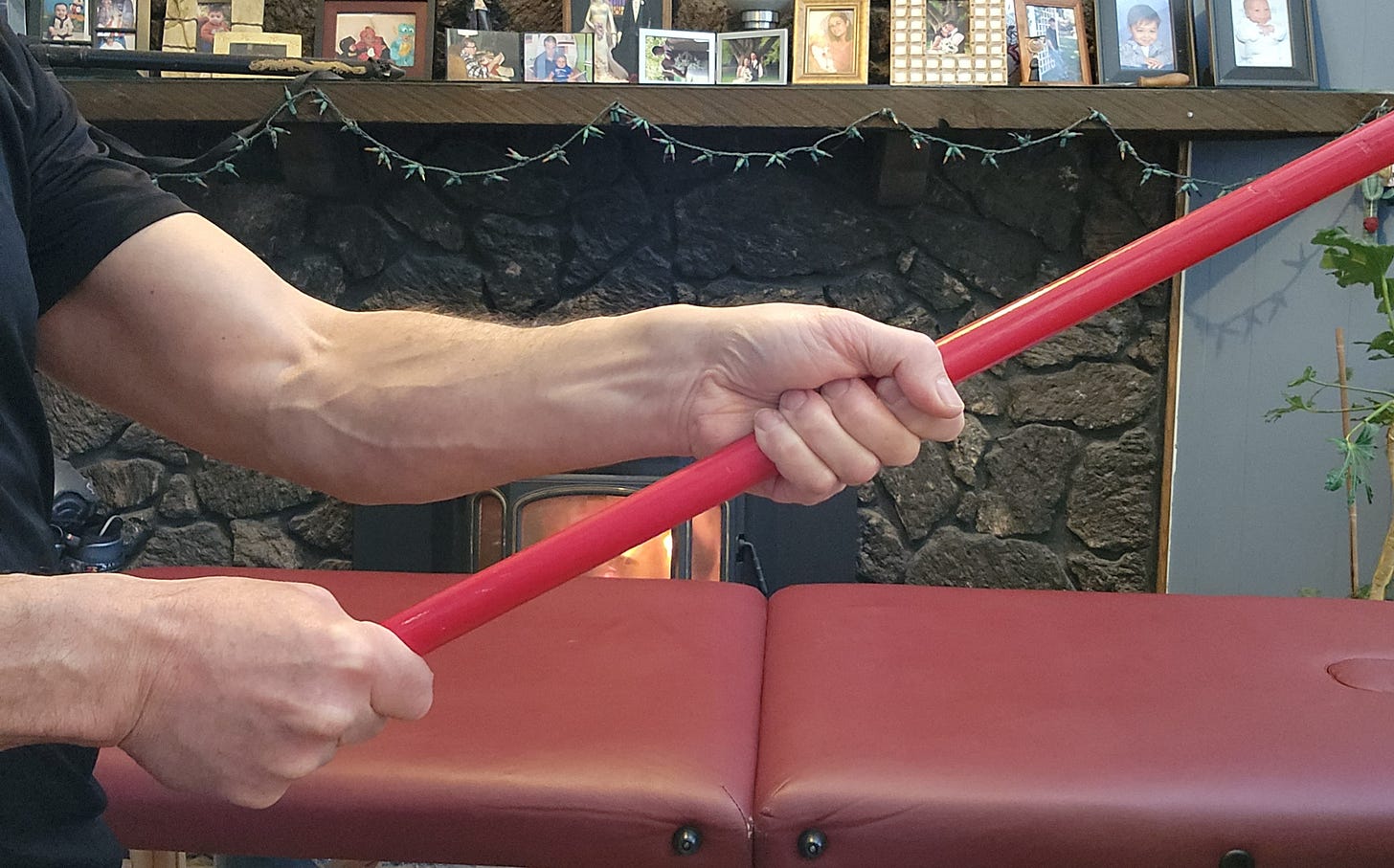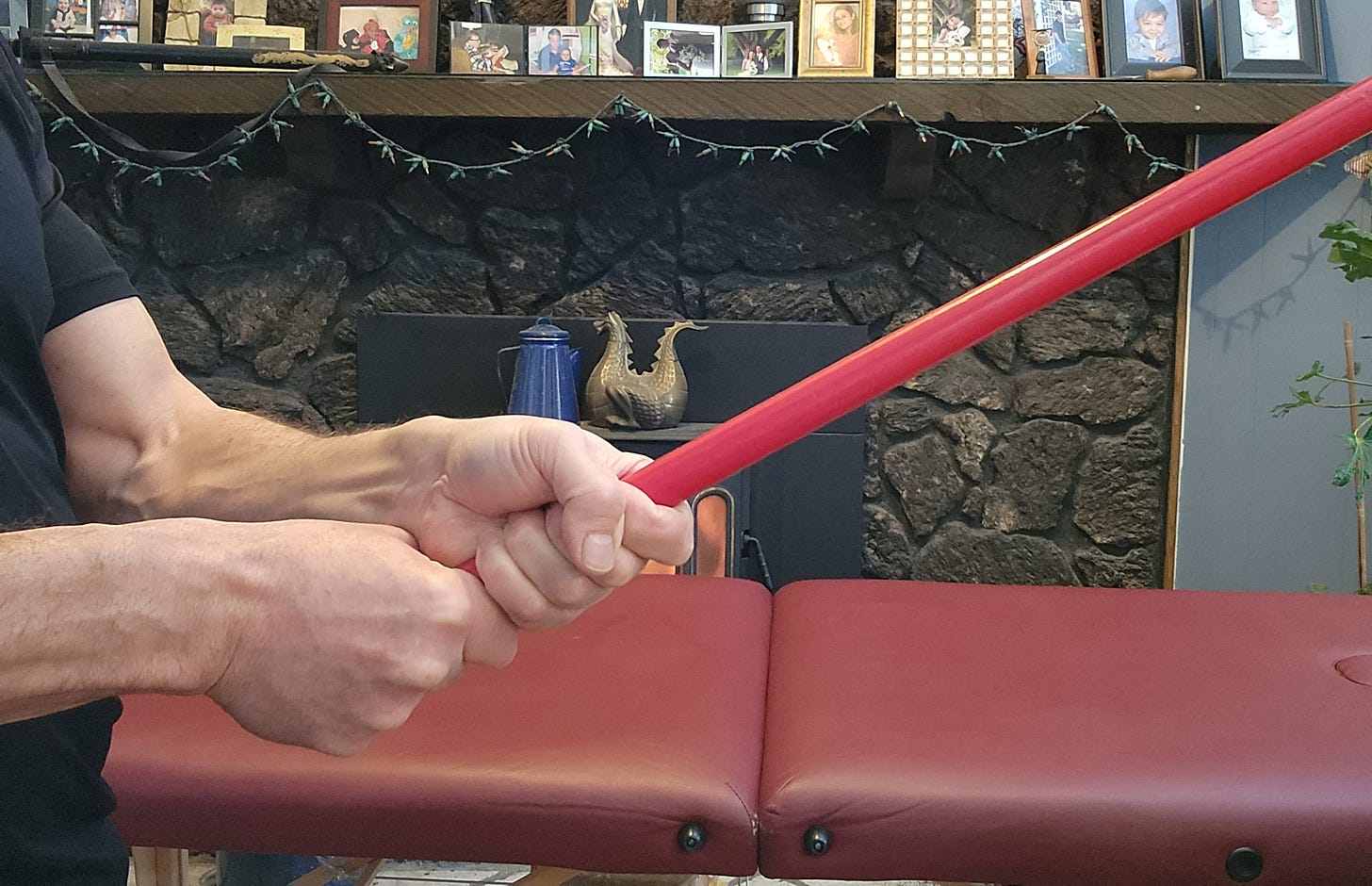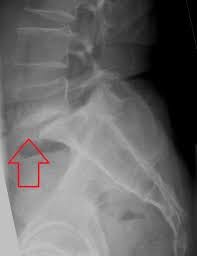This is not medical advice. Your doctor and therapist are always right. Always listen to them, and disregard this.
After Friday’s open heart surgery, I thought maybe I’d return to exercise science, briefly. Maybe alternate, soul bearing drivel with some useful information. Friday’s post was double my usual traffic, so I guess we're wanting more sarcasm, and more smart assed remarks. Nobody wants to be lectured about health and fitness. I will try to add more lube in all future articles and videos.
The straight leg raise is an exercise, and sometimes a test, that has been in the fitness and rehab industry forever. Why has it traditionally been used? You are firing both the hip flexor and quadricep muscles at the same time. It can be a good diagnostic tool for strength. Sometimes it is a diagnostic tool for back pain. Straightening the knee is very important for smooth walking without limping.
This can be a problem when there is not enough strength, and we force the issue. One of the hip flexors, the psoas, crosses the hip joint and attaches to the front of the lower spine. Again, the issue is leverage. The straight leg is a very long lever, and it is analogous to placing both hands at the bottom of a fishing pole.

Another problem is active insufficiency. This is where a muscle that crosses two joints has to pull from both ends at the same time (flexing the hip and extending the knee at the same time.) Add a long lever arm, and it’s pretty amazing we can do this at all. Not appreciating our poor leverage design for certain activities is part of the reason we get injured.
If the trunk or core is not stable, or strong enough, then the lower spine will be bowed under the weight of the straight leg. Not everyone needs more arch in their lower back. In my experience, about 20% of the population has too much arch. Sometimes this leads to anterior, or forward spondylolisthesis, (a word that makes my lisp sound like an angry Daffy Duck. Fun fact, I married a speech therapist, aka “professional talker”, as I like to call her. Now I realize the hypocrisy of that jab, as I have been pretty wordy myself lately.)
Spondylolisthesis is when one vertebrae slides forward on another. I am not saying that performing these will cause this to happen. If you have this condition, SLRs may not feel good, or could potentially cause it to become worse.
I have a theory that part of the reason for bendy joints half way down this long lever (i.e. knees and elbow joints) is too help relieve the strain on such a long lever arm. Of course we also need these joints for walking and eating. Performing a leg raise with a bent knee is easy.
I worked with a PT recently who stated that he used to give patients 3 sets of 20 of this exercise, but now does not do them at all, sighting some of the same reasons. I still like to see just 5 reps. It’s diagnostic. How weak is the core and hip flexor, and knee extensors? I don’t have anyone do more than 5 reps, regardless of their issues.
The SLR as an exercise is not really a functional movement. Hip flexors have a functional movement when we move from lying down to sitting up. They help us move the leg out of our own way. This is important after hip and knee surgery. Some people are struggling to get out of bed if they can not lift their leg.
I would argue we have hip flexors mostly to bring the leg forward when we walk.
Curiously, most of our generation completed sit ups as kids in grade school. Others would hold our feet. Our abdominals were firing, however we were using just as much hip flexors. I think a correlation is unlikely. You could argue that the lower spine was bowed, so the stress was less.
Kids are resilient, and growing, and I think we could handle it. Better than doing nothing. Future generational statistics might help with correlation. Later generations will probably have weaker abdominal muscles with the rise of device time.
The modern fitness industry frowns on sit ups for adults and kids, I think rightly so. Our abdominal muscles are stabilizers, not so much prime movers. Please check out my back articles to explore that further.






